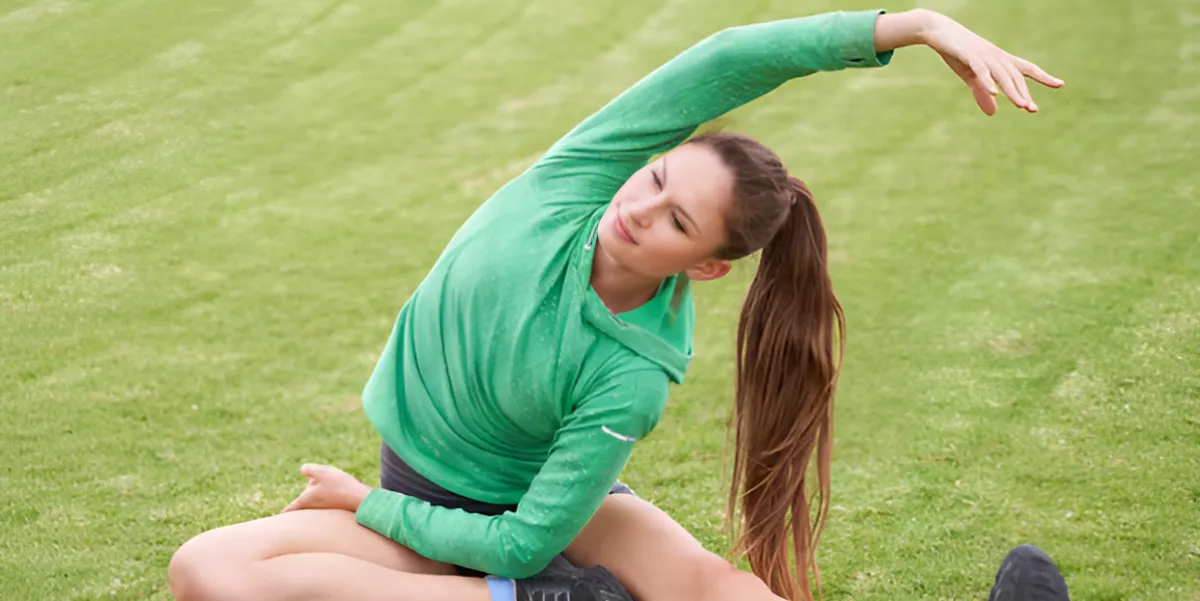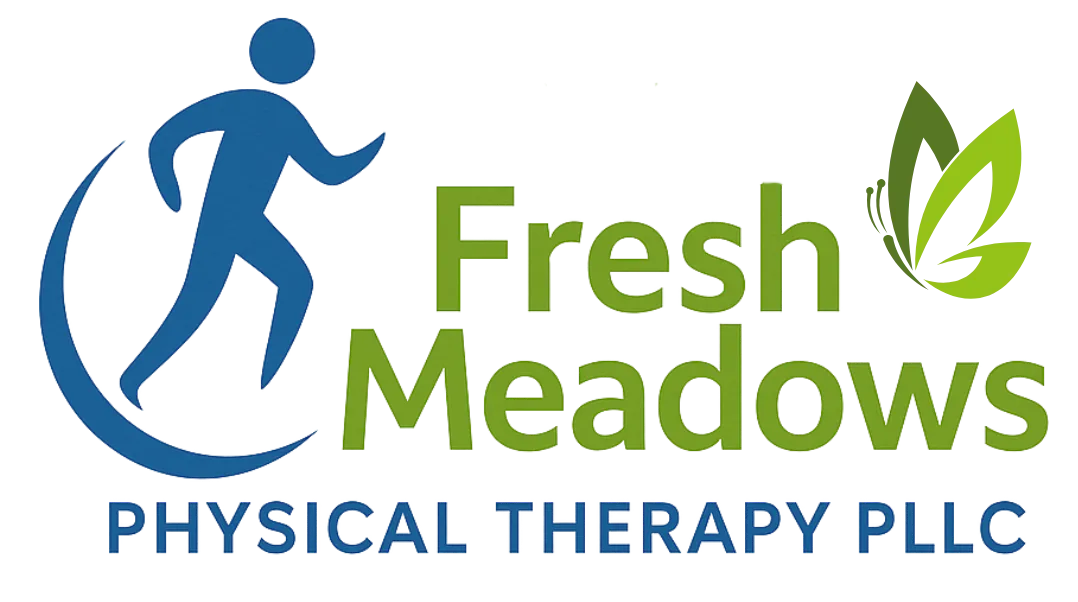Stretching Techniques to Reduce
the Risk of Sports Injuries
Stretching Techniques to Reduce
the Risk of Sports Injuries
Stretching Techniques to Reduce the Risk of Sports Injuries
June 13, 2025

Stretching is often recommended for athletes to prevent injuries and maintain optimal performance, but its effectiveness depends on the type and timing of stretches. This guide examines stretching methods, their role in injury prevention, and practical exercises to reduce injury risk.
Can Stretching Help Avoid Injuries?
Stretching is a proven method to lower the risk of injuries by enhancing mobility, flexibility, joint function, and circulation. It prepares the body for physical activity, allowing muscles and connective tissues to move freely and absorb stress more effectively. This practice is especially important for athletes involved in personal training or sports rehabilitation, as it helps correct muscle imbalances and supports joint mobility in critical areas such as the hips, knees, ankles, and feet.
Although stretching alone cannot completely prevent injuries, it significantly reduces the risk when performed correctly and combined with other training elements like strength, balance, and sport-specific exercises. Therefore, incorporating a proper stretching routine into your regimen can play a crucial role in injury prevention and overall athletic performance.
Various Stretching Techniques to Reduce Sports Injuries
There are different types of stretches, each serving a unique purpose. Knowing these can help you choose the right ones to improve your fitness routine and reduce injury risk.
1. Static Stretching
Static stretching involves holding a muscle in an extended position for 10 seconds to 3 minutes through slow, controlled movements. It’s ideal for post-exercise to promote muscle relaxation and recovery.
How it helps:
Regular static stretching improves range of motion and flexibility.
Post-exercise stretching alleviates muscle tightness and reduces injury risk.
Important Note on Muscle Strains:
Perform gentle static stretches only after inflammation has subsided.
Avoid stretching during the first few days post-injury; prioritize RICE (rest, ice, compression, elevation) for healing.
Consult a physical therapist or trainer to safely integrate stretches into your recovery plan.
2. Dynamic Stretching
Dynamic stretching involves active, controlled movements to improve range of motion and is ideal for warming up before exercise.
How it helps:
Dynamic stretches raise muscle temperature, enhance blood flow, and activate the nervous system. They help prevent injuries by preparing the body for movement and reducing the risk of pulling stiff muscles.
3. Proprioceptive Neuromuscular Facilitation (PNF) Stretching
Prepares the body for movement, boosts blood flow, and reduces injury risk.
How it helps:
PNF enhances flexibility using reflexes and is popular in sports rehab.
4. Ballistic Stretching
Ballistic stretching uses quick, bouncing movements to extend beyond your usual range of motion. Though some athletes may benefit, it’s generally not advised because it carries a higher risk of injury.
How it helps:
Ballistic stretching may help athletes improve dynamic flexibility, especially in sports with wide movement ranges. However, it should be done with caution and under the guidance of a trained professional.

6 Stretches Designed To Reduce The Risk Of Injury.
By performing stretches regularly and correctly, you can enhance your body's resilience, mobility, and readiness. Listed below are some of the best stretches for preventing sports injuries.
1. Hamstring Stretch (Static)
Loosening tight hamstrings supports hip movement and relieves lower back strain during physical activities.
How to do it:
Position yourself seated or standing with one leg stretched out.
Bend forward while keeping your back straight until you feel a stretch in your hamstring. Maintain the position for 20 to 30 seconds.
2. Hip Flexor Stretch (Static or PNF)
This stretch improves hip mobility, supports posture, and helps prevent lower back and knee pain during activity.
How to do it:
Kneel with one leg forward.
Push your hips forward.
Use a contract-relax technique for a deeper stretch.
3. Calf Stretch (Static)
Calf stretches improve ankle flexibility and reduce lower leg injury risk.
How to do it:
Position one foot behind you while facing a wall.
Keep your heel down and leg straight as you lean forward to stretch your calf.
Bend your knee slightly to target a different part of the calf.
4. Dynamic Leg Swings (Dynamic)
Leg swings warm up key muscles, improve circulation, and reduce injury risk before exercise.
How to do it:
Move your leg in a smooth, controlled motion front to back.
Swing your leg across your body horizontally for 10–15 reps each way.
5. Shoulder Circles (Dynamic)
Performing controlled arm circles engages the shoulder muscles and boosts circulation in the joints, helping to prepare the shoulders for overhead motions and minimizing the risk of rotator cuff injuries.
How to do it:
Extend your arms and create small, steady circular motions.
Slowly expand the size of the circles, completing 10–15 repetitions in both forward and backward directions.
6. Cat-Cow Stretch (Dynamic)
The stretch improves spinal flexibility, warms muscles, and aids posture while lowering back discomfort risks.
How to do it:
Alternate between cow and cat poses on hands and knees.
Do the motion slowly and repeat 10–15 times.
Start Your Path To Health And Healing With Fresh Meadows.
Fresh Meadows P.T. supports recovery, mobility, and injury prevention with personalized treatment plans.
We personalize services to support recovery and improve movement.
Book an appointment today and follow us on social media for therapy tips.
Request An Appointment
Please fill out this form and
we will contact you about scheduling.
Privacy Policy | Terms of Service
Stretching Techniques to Reduce the Risk of Sports Injuries
June 13, 2025

Stretching is often recommended for athletes to prevent injuries and maintain optimal performance, but its effectiveness depends on the type and timing of stretches. This guide examines stretching methods, their role in injury prevention, and practical exercises to reduce injury risk.
Can Stretching Help Avoid Injuries?
Stretching is a proven method to lower the risk of injuries by enhancing mobility, flexibility, joint function, and circulation. It prepares the body for physical activity, allowing muscles and connective tissues to move freely and absorb stress more effectively. This practice is especially important for athletes involved in personal training or sports rehabilitation, as it helps correct muscle imbalances and supports joint mobility in critical areas such as the hips, knees, ankles, and feet.
Although stretching alone cannot completely prevent injuries, it significantly reduces the risk when performed correctly and combined with other training elements like strength, balance, and sport-specific exercises. Therefore, incorporating a proper stretching routine into your regimen can play a crucial role in injury prevention and overall athletic performance.
Various Stretching Techniques to Reduce Sports Injuries
There are different types of stretches, each serving a unique purpose. Knowing these can help you choose the right ones to improve your fitness routine and reduce injury risk.
1. Static Stretching
Static stretching involves holding a muscle in an extended position for 10 seconds to 3 minutes through slow, controlled movements. It’s ideal for post-exercise to promote muscle relaxation and recovery.
How it helps:
Regular static stretching improves range of motion and flexibility.
Post-exercise stretching alleviates muscle tightness and reduces injury risk.
Important Note on Muscle Strains:
Perform gentle static stretches only after inflammation has subsided.
Avoid stretching during the first few days post-injury; prioritize RICE (rest, ice, compression, elevation) for healing.
Consult a physical therapist or trainer to safely integrate stretches into your recovery plan.
2. Dynamic Stretching
Dynamic stretching involves active, controlled movements to improve range of motion and is ideal for warming up before exercise.
How it helps:
Dynamic stretches raise muscle temperature, enhance blood flow, and activate the nervous system. They help prevent injuries by preparing the body for movement and reducing the risk of pulling stiff muscles.
3. Proprioceptive Neuromuscular Facilitation (PNF) Stretching
Prepares the body for movement, boosts blood flow, and reduces injury risk.
How it helps:
PNF enhances flexibility using reflexes and is popular in sports rehab.
4. Ballistic Stretching
Ballistic stretching uses quick, bouncing movements to extend beyond your usual range of motion. Though some athletes may benefit, it’s generally not advised because it carries a higher risk of injury.
How it helps:
Ballistic stretching may help athletes improve dynamic flexibility, especially in sports with wide movement ranges. However, it should be done with caution and under the guidance of a trained professional.

6 Stretches Designed To Reduce The Risk Of Injury.
By performing stretches regularly and correctly, you can enhance your body's resilience, mobility, and readiness. Listed below are some of the best stretches for preventing sports injuries.
1. Hamstring Stretch (Static)
Loosening tight hamstrings supports hip movement and relieves lower back strain during physical activities.
How to do it:
Position yourself seated or standing with one leg stretched out.
Bend forward while keeping your back straight until you feel a stretch in your hamstring. Maintain the position for 20 to 30 seconds.
2. Hip Flexor Stretch (Static or PNF)
This stretch improves hip mobility, supports posture, and helps prevent lower back and knee pain during activity.
How to do it:
Kneel with one leg forward.
Push your hips forward.
Use a contract-relax technique for a deeper stretch.
3. Calf Stretch (Static)
Calf stretches improve ankle flexibility and reduce lower leg injury risk.
How to do it:
Position one foot behind you while facing a wall.
Keep your heel down and leg straight as you lean forward to stretch your calf.
Bend your knee slightly to target a different part of the calf.
4. Dynamic Leg Swings (Dynamic)
Leg swings warm up key muscles, improve circulation, and reduce injury risk before exercise.
How to do it:
Move your leg in a smooth, controlled motion front to back.
Swing your leg across your body horizontally for 10–15 reps each way.
5. Shoulder Circles (Dynamic)
Performing controlled arm circles engages the shoulder muscles and boosts circulation in the joints, helping to prepare the shoulders for overhead motions and minimizing the risk of rotator cuff injuries.
How to do it:
Extend your arms and create small, steady circular motions.
Slowly expand the size of the circles, completing 10–15 repetitions in both forward and backward directions.
6. Cat-Cow Stretch (Dynamic)
The stretch improves spinal flexibility, warms muscles, and aids posture while lowering back discomfort risks.
How to do it:
Alternate between cow and cat poses on hands and knees.
Do the motion slowly and repeat 10–15 times.
Start Your Path To Health And Healing With Fresh Meadows.
Fresh Meadows P.T. supports recovery, mobility, and injury prevention with personalized treatment plans.
We personalize services to support recovery and improve movement.
Book an appointment today and follow us on social media for therapy tips.
Request An Appointment
Please fill out this form and
we will contact you about scheduling.
Privacy Policy | Terms of Service


